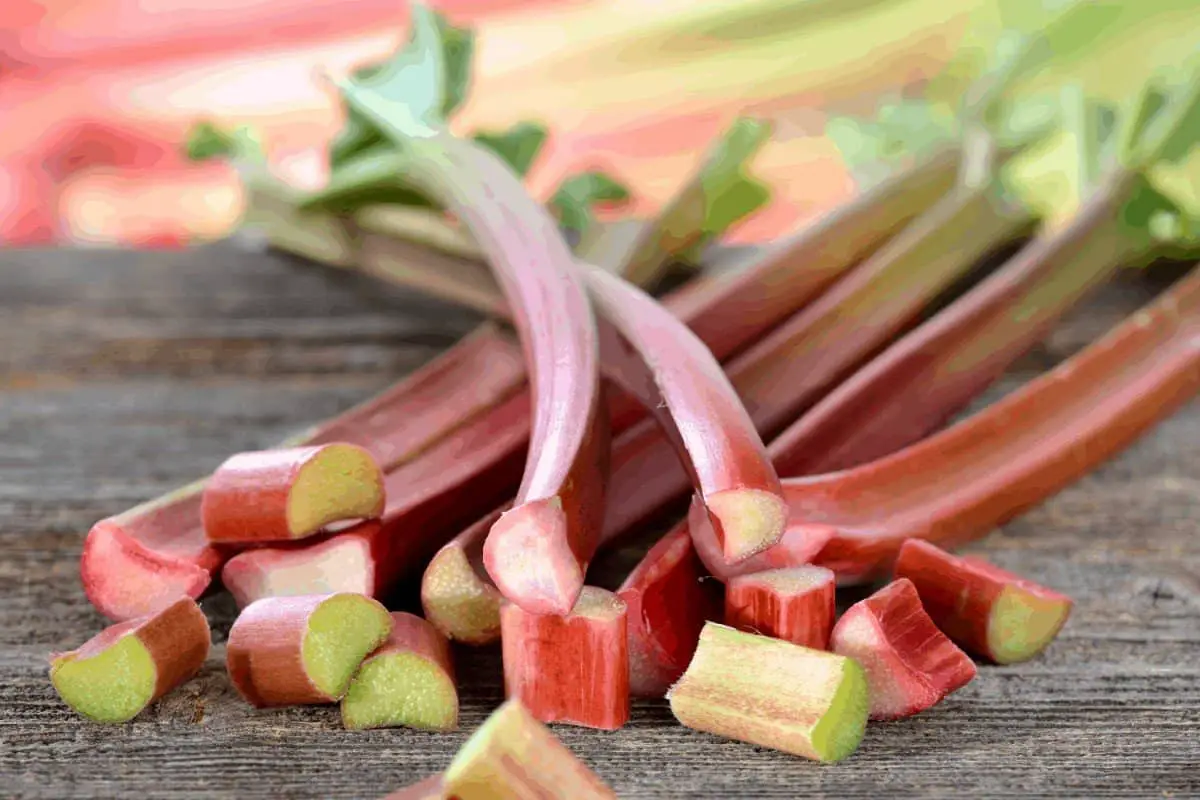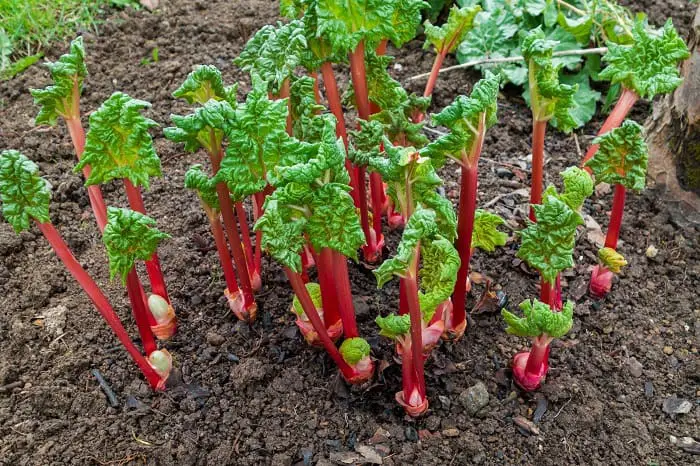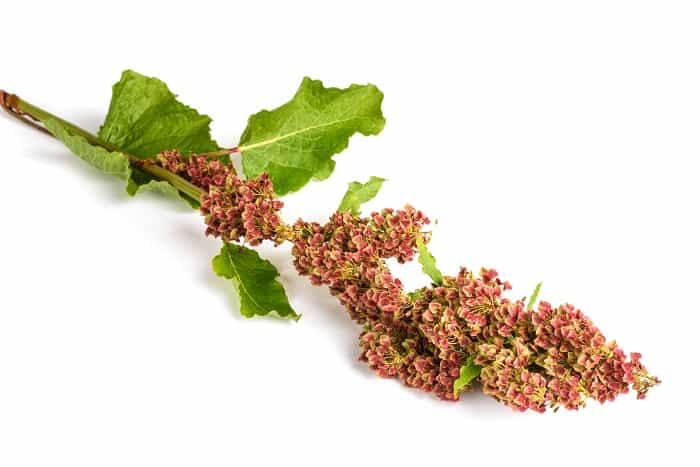A lot of gardeners ask this question once they begin to notice weeds in their gardens that look like rhubarb.
You take a closer look at the plant and notice that it has the same leaves and stems, but you can swear that it is not the same rhubarb that you are used to.
Before you go wondering what sorcery is at work, other plants look like rhubarb, but just because they look like it doesn’t mean they have the same properties as the plant.
The rhubarb is a herbaceous plant that is used in medicine to treat certain conditions. Over the years, a lot of plants were mistakenly called the rhubarb due to similarities in their appearance.
Before we go into listing the other plants that look like rhubarb, let’s familiarize ourselves with the original rhubarb herb and some of its benefits.
Table of Contents
What is Rhubarb?
Rheum Rhubarbarum is an herbaceous plant that belongs to the family Polygonaceae. It is a perennial crop that is grown mainly for use as a vegetable. In the US and most parts of Europe, the plant is cooked as part of a dish and sweetened, while in Asia, it is used mainly for medicinal purposes.
The dish tastes sour, which is why it is flavored to improve the taste. Most people cook the veggie in sugar water. The stalks are thick and appear in a variety of colors, including red, pink, and pale green.
You can find the rhubarb plant mostly in temperate regions with high mountains. The plants do well in winter weather, which is why they are not common in the Middle East and Africa, due to the absence of cold winters.
There are a lot of varieties of the rhubarb plant, but the most common one is the garden rhubarb that is used for culinary purposes.
Rhubarb as a Dish
If you have ever tried the dish before, you will notice the sour taste and wonder what is so particular about it. In the US, rhubarb is classified as a fruit and is rarely eaten raw. Most people add it as part of a dish, blend it into a jam, especially for use as a dessert. In any case, only the stalks are eaten, and the root is discarded. In the UK, rhubarb is often referred to as a pie plant as it is used in making the traditional dessert pie.
Other ways you can use rhubarb as part of your cooking include soups, sauces, tarts, cocktails, crumbles, and rhubarb cocktails.
Nutritional Content of Rhubarb
Rhubarb is used as part of a dish despite its sour taste due to its high nutritional content. A 100 gram serving of rhubarb cooked with sugar contains
- Calories
- Fiber
- Carbohydrate
- Protein
- Calcium
- Potassium
- Folate
- Vitamin K1
- Vitamin C
Health Benefits of Rhubarb
The rhubarb plant is rich in nutrients that are beneficial to the body, which is why it is consumed despite its sour taste. You should be aware that there are limited studies to ascertain the claims of the benefits. However, some of the benefits of the rhubarb plant include:
-
Rich in Antioxidants
In a study, it was presumed that rhubarb contained more polyphenol than kale. The active ingredients that make kale all that important. Rich in antioxidants including anthocyanins, and proanthocyanidins which are also present in fruits, cocoa, and red wine.
-
May Reduce Cholesterol Levels
Rhubarb is also used in medicine due to the claims that it can be used in lowering cholesterol levels of the body. In a study carried out on men, it was discovered to have provided a positive result. Fiber plants are indeed great at reducing cholesterol levels in the body, but I said earlier, more research is needed to prove the health claims of rhubarb.
Other Plants That Look Like Rhubarb
Not all plants with a red stalk and sour taste are the original rhubarb, so you want to be careful when picking vegetables in your garden. If you must eat any of the rhubarbs, ensure that it is the garden rhubarb to be on the safe side.
Some of the common plants that are confused for rhubarb includes
-
Beta Vulgaris
Also known as the spinach rhubarb, this plant is often mistaken for the real deal. You would swear that it is the garden rhubarb due to the thick and bright red leaf stems similar to the edible rhubarb.
-
Rumex Alpinus
It is also called the monk rhubarb but is not the same as the garden rhubarb. The root appears stout and yellow. The leaves of the stem can grow to a height of 120 cm and are usually pale green, which is why it is often confused as the main plant. On top of the stems are many branches with flowers that are red or purple. The roots can also be dried and used for medicinal purposes, but the effect is not as much as the garden rhubarb.
-
Arctium Lappa
Often referred to as the Greater Burdock, or Edible Burdock, this plant is also mistaken for the edible rhubarb. The plant is found in the wild but is cultivated in gardens for use as an edible vegetable.
-
Rumex Hymenosepalus
known as the wild rhubarb or desert ginseng, the plant is native to North America but is cultivated widely in other parts of the world. In Asia, the roots are used to soften the skin of their animals. It is also used in making herbal teas for the treatment of diarrhea, and for relieving symptoms of sore throat.
-
Gunnera Manicate
The Giant Rhubarb is also mistaken for the garden rhubarb that is used in cooking. You cannot ignore it, the huge plant with dark green leaves can be noticeable among other plants. Its large domineering size makes it a good plant to use as a shade, or in protecting other garden plants.
Now that you are familiar with some of the other plants that look like rhubarb, we are sure that you won’t make the mistake next time. If you are uncertain about the safety of the plant, you should ask your local gardener to be on the safe side.
If you would like to ask us any questions, feel free to do so in the comment section.


